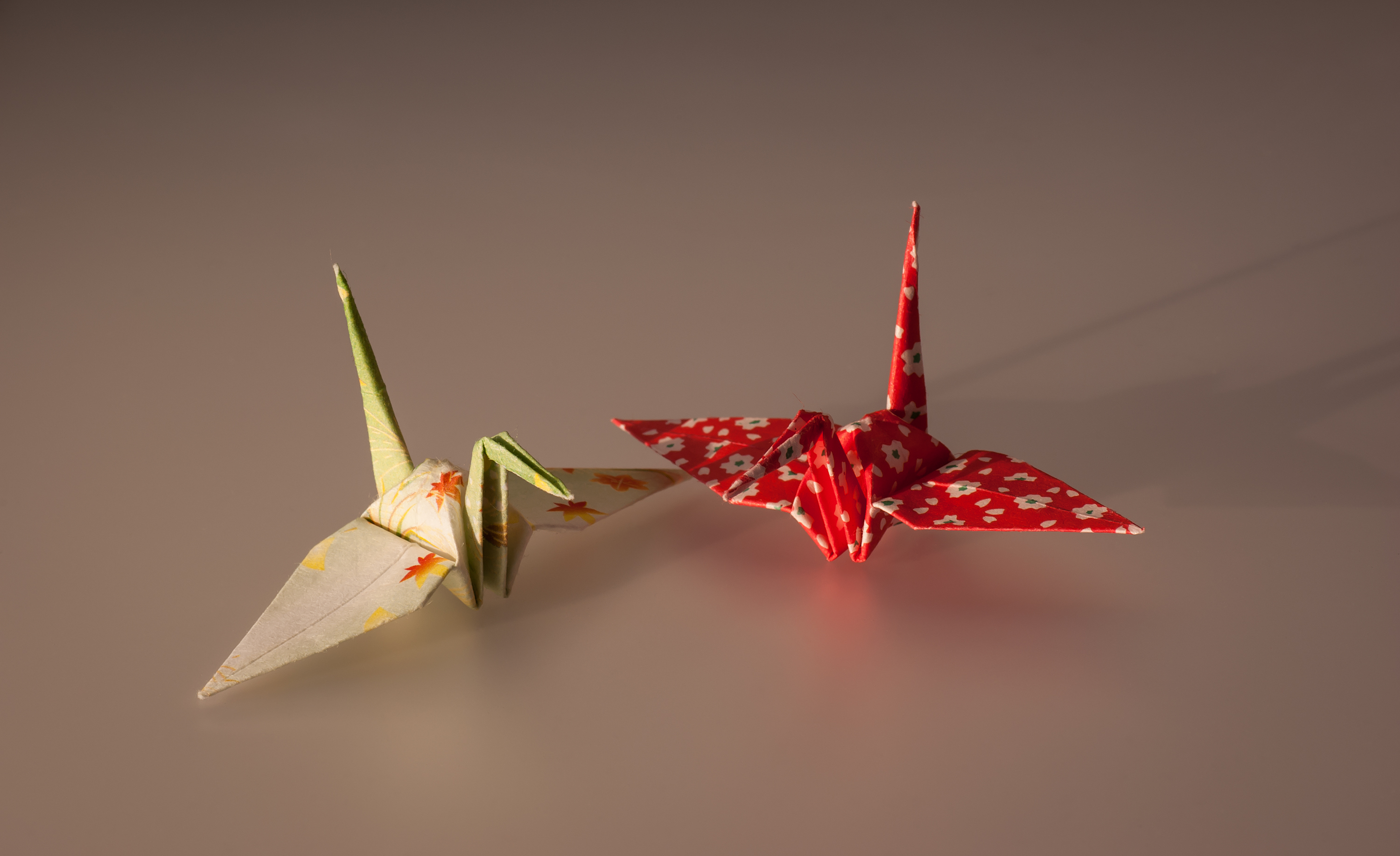|
Bone Folder
A bone folder, bonefolder, or folding bone is a dull-edged hand tool used to fold and crease material in crafts such as bookbinding, cardmaking, origami, and other paper crafts that require a sharp crease or fold. The tool was also used when correspondence by letter writing was more formal and an art. Bone folders may be made from the leg bone of a cow, deer, or similar animal; ivory; or plastic. Those made from bone may be less likely to leave residue on the workpiece. In Japan, the equivalent folding tool is traditionally made from bamboo, although alternatives include a Japanese fabric marking tool (''hera'') and a Western bone folder. See also * Bone tool In archaeology, bone tools have been documented from the advent of ''Homo sapiens'' and are also known from ''Homo neanderthalensis'' contexts or even earlier. Bone has been used for making tools by virtually all hunter-gatherer societies, even w ... References {{DEFAULTSORT:Bone Folder Book arts Bookbinding ... [...More Info...] [...Related Items...] OR: [Wikipedia] [Google] [Baidu] |
Hand Tool
A hand tool is any tool that is powered manual labour, by hand rather than a motor. Categories of hand tools include wrenches, pliers, cutter (other), cutters, File (tool), files, hammer, striking tools, chisel, struck or hammered tools, screwdriver, screwdrivers, vises, clamp (tool), clamps, snips, hacksaws, drills, and knives. Outdoor tools such as garden forks, pruning shears, and Rake (tool), rakes are additional forms of hand tools. Portable power tools are not hand tools. History Hand tools have been used by humans since the Stone Age, when stone tools were used for hammering and cutting. During the Bronze Age, tools were made by casting alloys of copper and tin. Bronze tools were sharper and harder than those made of stone. During the Iron Age iron replaced bronze, and tools became even stronger and more durable. The Ancient Rome, Romans developed tools during this period which are similar to those being produced today. After the Industrial Revolution, most tools ... [...More Info...] [...Related Items...] OR: [Wikipedia] [Google] [Baidu] |
Bookbinding
Bookbinding is the process of building a book, usually in codex format, from an ordered stack of paper sheets with one's hands and tools, or in modern publishing, by a series of automated processes. Firstly, one binds the sheets of papers along an edge with a thick needle and strong thread. One can also use loose-leaf rings, binding posts, twin-loop spine coils, plastic spiral coils, and plastic spine combs, but they last for a shorter time. Next, one encloses the bound stack of paper in a cover. Finally, one places an attractive cover onto the boards, and features the publisher's information and artistic decorations. The trade of bookbinding includes the binding of blank books and printed books. Blank books, or stationery bindings, are books planned to be written in. These include accounting ledgers, guestbooks, logbooks, notebooks, manifold books, day books, diary, diaries, and sketchbooks. Printed books are produced through letterpress printing, offset printing, offset litho ... [...More Info...] [...Related Items...] OR: [Wikipedia] [Google] [Baidu] |
Cardmaking
Card making is the craft of hand-making greeting cards. It shares skills in common in allied crafts such as scrapbooking and stamping. Unlike handcrafted cards, mass-produced printed greeting cards have been faced with competition from electronic greeting cards. Over seven billion greeting cards were sent in the US each year; greeting cards are a multibillion-dollar business. Many hobbyists taking advantage of the low setup costs of web-based selling and the wide customer-base of auction sites like eBay to market their cards. Many others continue to sell their creations at craft fairs, markets and fêtes. Others use their cardmaking skills to turn a profit in the wedding planning market making handmade wedding invitations and favors. There are many different variations of handmade cards including decoupage, more commonly known as 3D, where a design is printed a number of times, then various areas of the design are cut and layered on top of each other using double-sided stic ... [...More Info...] [...Related Items...] OR: [Wikipedia] [Google] [Baidu] |
Origami
) is the Japanese art of paper folding. In modern usage, the word "origami" is often used as an inclusive term for all folding practices, regardless of their culture of origin. The goal is to transform a flat square sheet of paper into a finished sculpture through folding and sculpting techniques. Modern origami practitioners generally discourage the use of cuts, glue, or markings on the paper. Origami folders often use the Japanese word ' to refer to designs which use cuts. In the detailed Japanese classification, origami is divided into stylized ceremonial origami (儀礼折り紙, ''girei origami'') and recreational origami (遊戯折り紙, ''yūgi origami''), and only recreational origami is generally recognized as origami. In Japan, ceremonial origami is generally called "origata" ( :ja:折形) to distinguish it from recreational origami. The term "origata" is one of the old terms for origami. The small number of basic origami folds can be combined in a variety of ... [...More Info...] [...Related Items...] OR: [Wikipedia] [Google] [Baidu] |
Papercraft
Paper models, also called card models or papercraft, are Physical model, models constructed mainly from sheets of heavy paper, paperboard, card stock, or foam. Details This may be considered a broad category that contains origami and card modeling. Origami is the process of making a paper model by folding a single piece of paper without using glue or cutting while the variation kirigami does. Card modeling is making scale models from sheets of cardstock on which the parts were printed, usually in full color. These pieces would be cut out, folded, scored, and glued together. Papercraft is the art of combining these model types to build complex creations such as wearable suits of armor, life-size characters, and accurate weapon models. Sometimes the model pieces can be punched out. More frequently the printed parts must be cut out. Edges may be scored to aid folding. The parts are usually glued together with polyvinyl acetate Adhesive, glue ("white glue", "PVA"). In this kind ... [...More Info...] [...Related Items...] OR: [Wikipedia] [Google] [Baidu] |
Leg Bone
Leg bones are the bones found in the leg. These can include the following: * Femur – The bone in the thigh. * Patella – The knee cap * Tibia – The shin bone, the larger of the two leg bones located below the knee cap * Fibula The fibula (: fibulae or fibulas) or calf bone is a leg bone on the lateral side of the tibia, to which it is connected above and below. It is the smaller of the two bones and, in proportion to its length, the most slender of all the long bones. ... – The smaller of the two leg bones located below the patella {{SIA Bones of the lower limb ... [...More Info...] [...Related Items...] OR: [Wikipedia] [Google] [Baidu] |
Bamboo
Bamboos are a diverse group of mostly evergreen perennial plant, perennial flowering plants making up the subfamily (biology), subfamily Bambusoideae of the grass family Poaceae. Giant bamboos are the largest members of the grass family, in the case of ''Dendrocalamus sinicus'' having individual stalks (Culm (botany), culms) reaching a length of , up to in thickness and a weight of up to . The internodes of bamboos can also be of great length. ''Kinabaluchloa, Kinabaluchloa wrayi'' has internodes up to in length. and ''Arthrostylidium schomburgkii'' has internodes up to in length, exceeded in length only by Cyperus papyrus, papyrus. By contrast, the stalks of the tiny bamboo Raddiella, ''Raddiella vanessiae'' of the savannas of French Guiana measure only in length by about in width. The origin of the word "bamboo" is uncertain, but it most likely comes from the Dutch language, Dutch or Portuguese language, Portuguese language, which originally borrowed it from Malay langua ... [...More Info...] [...Related Items...] OR: [Wikipedia] [Google] [Baidu] |
Bone Tool
In archaeology, bone tools have been documented from the advent of ''Homo sapiens'' and are also known from ''Homo neanderthalensis'' contexts or even earlier. Bone has been used for making tools by virtually all hunter-gatherer societies, even when other materials were readily available. Any part of the skeleton can potentially be utilized; however, antlers and long bones provide some of the best working material. Long bone fragments can be shaped, by scraping against an abrasive stone, into such items as arrow and spear points, needles, awls, and fish hooks. Other bone tools include spoons, knives, pins, needles, flakers, hide scrapers and reamers. They made musical rasps, flutes and whistles as well as toys have also been made of bone. Decoratively carved articles were also made of bone such as hair combs, hair pins and pendants. Even the teeth and hooves did not go to waste. The teeth were drilled and used for decoration on clothing and necklaces. The hooves were also dril ... [...More Info...] [...Related Items...] OR: [Wikipedia] [Google] [Baidu] |
Indiana University
Indiana University (IU) is a state university system, system of Public university, public universities in the U.S. state of Indiana. The system has two core campuses, five regional campuses, and two regional centers under the administration of IU Indianapolis. The flagship campus of Indiana University is Indiana University Bloomington. Campuses Core campuses *Indiana University Bloomington (IU Bloomington) is the flagship campus of Indiana University. The Bloomington campus is home to numerous premier Indiana University schools, including the College of Arts and Sciences, the Hutton Honors College, the Jacobs School of Music, an extension of the Indiana University School of Medicine, the Indiana University School of Informatics, Luddy School of Informatics, Computing, and Engineering, which includes the former School of Library and Information Science (now Department of Library and Information Science), School of Optometry, the Indiana University School of Public and Enviro ... [...More Info...] [...Related Items...] OR: [Wikipedia] [Google] [Baidu] |
Book Arts , the process of creating a book
{{disambiguation ...
Book arts may refer to: * Artist's book, a work of art in the form of a book * Book design, the art of designing a book * Book illustration, illustration in a book * Bookbinding Bookbinding is the process of building a book, usually in codex format, from an ordered stack of paper sheets with one's hands and tools, or in modern publishing, by a series of automated processes. Firstly, one binds the sheets of papers alon ... [...More Info...] [...Related Items...] OR: [Wikipedia] [Google] [Baidu] |






